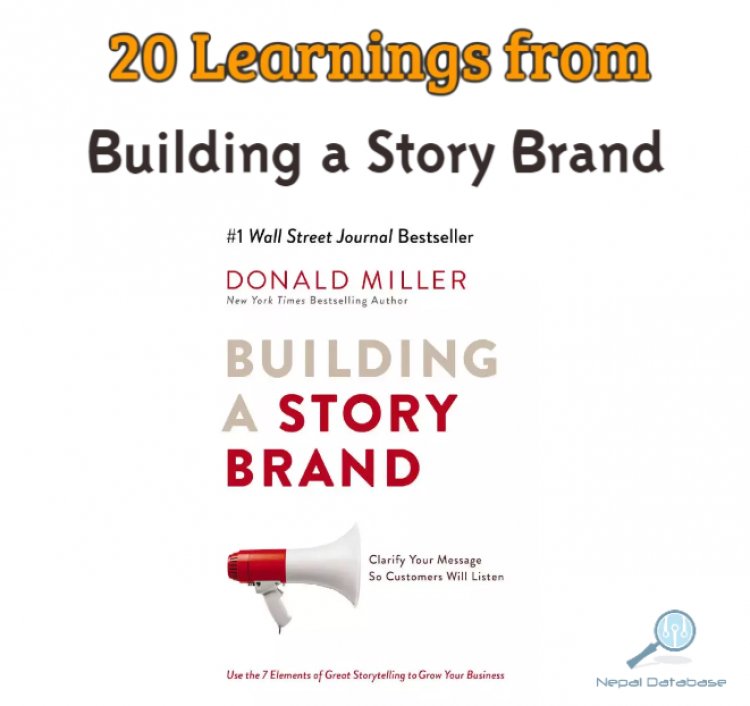Building a Story Brand: 20 Key Lessons for Effective Brand Messaging
Learn how to effectively communicate your brand's message to your customers with 20 key lessons from "Building a Story Brand" by Donald Miller.

"Building a Story Brand" by Donald Miller is a book that teaches business owners and marketers how to effectively communicate their brand's message to their customers. The book focuses on the power of storytelling and how it can be used to create a compelling brand message. Here are 20 important lessons from the book:
- Your customers are the hero of your story, not your brand. Your brand should play the role of the guide who helps the hero overcome obstacles.
- Customers are looking for solutions to their problems, not just products or services.
- A clear message is crucial for effective communication. Customers should be able to understand what your brand is all about in a few seconds.
- Your brand message should be focused on your customers' needs, not your own.
- Customers are more likely to take action when they can clearly see how your brand can help them achieve their goals.
- Your brand should have a clear and specific call to action that tells customers what you want them to do next.
- Customers are more likely to remember stories than they are facts and figures.
- Effective storytelling requires a clear structure, including a clear protagonist, antagonist, and a resolution.
- Your brand should have a clear understanding of its target audience and their pain points.
- Your brand should be able to clearly articulate the transformation that your customers will experience as a result of using your product or service.
- Your brand should avoid using industry jargon and instead focus on using language that is easy for customers to understand.
- Your brand should be able to clearly define its value proposition and what sets it apart from the competition.
- Your brand's message should be consistent across all platforms and channels.
- A brand's website should be designed with the customer in mind, with a clear and simple navigation and messaging that speaks to the customer's pain points and goals.
- Social proof, such as customer testimonials and reviews, can be powerful tools for building trust with potential customers.
- Your brand should be willing to admit its weaknesses and address them honestly.
- A brand's message should be aspirational, speaking to the customer's hopes and dreams.
- Your brand should focus on creating a sense of urgency and scarcity to encourage customers to take action.
- Your brand should use emotional triggers to create a connection with customers, such as using stories to evoke emotions like empathy and inspiration.
- A brand's message should be constantly evolving and improving based on feedback and data.
In conclusion, "Building a Story Brand" offers valuable insights and strategies for creating a compelling brand message that resonates with customers. By focusing on the power of storytelling and understanding the customer's needs, a brand can create a clear and effective message that drives action. By implementing the lessons from this book, businesses can create a brand that is memorable, impactful, and successful.
What's Your Reaction?





































































































